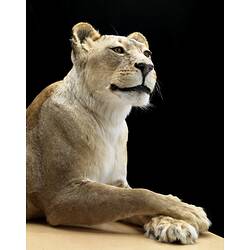Tissue and DNA
The Tissue and DNA Collection is a cryogenic repository of samples across diverse faunal groups, with particular strengths in birds, mammals, fishes, reptiles, amphibians, echinoderms, cephalopod molluscs and land snails. The collection consists of nearly 35,000 registered tissues stored frozen in -80°C freezers. The collection consists of a number of tissue types, but is composed primarily of skin, muscle, heart, liver, feather, fur and blood samples. Samples can also take the form of pure extracted DNA. Many of the tissues derive from voucher specimens in the Museum's collections and from voucher specimens in the collections of other Institutions. Tissues not linked to voucher specimens are often taken from specimens that were caught, identified and photographed before being released.
Significance
The Tissue and DNA Collection is now one of the largest and most diverse in Australia. It is particularly valuable because a large proportion of tissue samples have associated voucher specimens, meaning their provenance is well known and understood. The collection contains irreplaceable tissue samples from a number of representatives of recently extinct Australian animals that cannot be obtained elsewhere. The Tissue Collection plays a pivotal role in molecular research in evolution, phylogenetics (how species are related), species identification, conservation and population genetics. The tissues are an irreplaceable resource for understanding the past, reflecting on the present and looking into the future.


